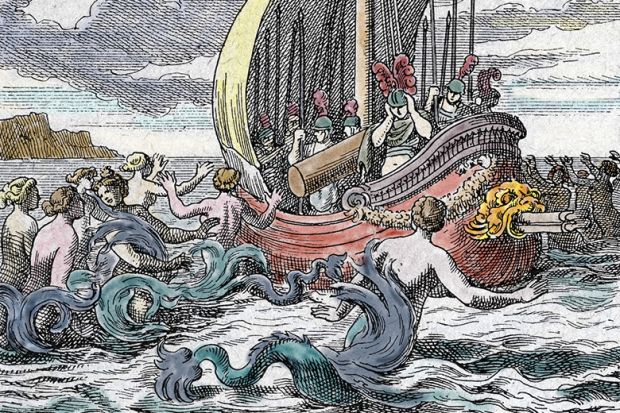As Odysseus knew all too well, navigating obstacles is inevitable as you attempt to chart your course through somewhat unknown territory.
Following proclamation of the state legislation required to formally establish the merger of the universities of Adelaide and South Australia, we are now facing our own Odyssey, with the journey towards our final destination – a fully functional new Adelaide University – not as linear as first conceived.
We might not be met with one-eyed giants or witches attempting to hijack our fate, but diversions abound as we attempt to deliver something never done before at this scale in Australia, with a university community of more than 500,000 staff, students and alumni offering different perspectives, experiences and of course, opinions.
Our current project structure and the mechanics behind it provide a small glimpse into this highly complex operation. The duality of decision-making, a deliberately democratic two-by-two approach across the board, gives rise to everyday tensions – and, let’s be honest, too many meetings. In the context of scale, we have identified around 600 tech applications, with 900 associated business processes, in our current systems alone, and this forms but one element across a holistic Integration Project Plan with more than 500 milestones and thousands of subsequent activities.
Odysseus took 10 years to wend his way back to Ithaca from the Trojan War, but we don’t have that long. We are committed to establishing a single merged university by 2026. Hence, a balance needs to be struck between the natural academic urge to evolve, iterate and innovate solutions, taking the best from each of our two universities’ existing approaches, and the need to prosecute a plan towards a clear objective, which might simply involve choosing between those existing approaches, with a view to further transform them after our January 2026 opening.
Consistent with the new Adelaide University Act 2023, we have negotiated a comprehensive Tripartite Agreement and established a Transition Council, incorporating figures from both of our existing councils to, in effect, run the new institution alongside the current two until the end of 2025. But we are legislatively bound to ensure that all adopted resolutions receive at least 60 per cent of the votes – another uncharted realm and a recipe for more potential tensions, perhaps.
In an attempt to provide further proof points, let us pull back the curtain (ever so slightly) on some of the work currently being done by our amazing staff – though, of course, we must omit certain details to protect the innocent.
The task of delivering on our ambition to create Australia’s most accessible and contemporary teaching and learning experience imposes a heavy load. We are asking academic teams who were once rivals to come together in the ultimate trust-fall exercise, building rapid rapport and working at pace, through formally staged, non-sequential sprints, to solidify programme and course design without compromising on quality. What could possibly go wrong?
For degrees accredited by professional bodies, the path is fairly straightforward, with guardrails in place. But for more generalist degrees, structured by specialisations or majors, how do we decide what stays and what changes? We are staging an oft-contemplated but seldom attempted tussle between the traditional and the emerging: time-honoured disciplines versus what is contemporary, necessary and/or viable in the future. Interestingly, though, once this particular Pandora’s box has been opened, focus rapidly shifts to learning outcomes, graduate qualities and employability – rather than unwieldy discussions of what degree names will appear on parchments.
We also need to prioritise load planning – how many of what type of students the university will have, by demand or by dint of offerings – and alignment to state and national agendas and to global skills trends. We need to prioritise EFTSL (equivalent full-time student load) but also leave the door open for innovation and evolution as we build out the transformation for the duration of our decadal strategic plan to 2034.
Across our existing universities, we currently offer around 5,000 courses. Beyond the need for rationalisation irrespective of the merger, we have to seriously consider what is aligned to our future vision and relevant to students. Our approach has been to identify a set of common-core courses that the bulk of our students will take – the “secret sauce” ensuring the relevant and transferable skills that will define the Adelaide University graduate.
As with anything new, this has served up its fair share of robust debates. It is no easy feat to find agreement on what employers will value most – and what will also provide foundational knowledge for students no matter their discipline.
We are also exploring the potential to progress a new internal academic calendar, adopting a “one-model” approach to aid seamless transition between study modes and to support greater flexibility for students and academic course scheduling. As every academic leader knows, the timetable box is one of Pandora’s favourites. More tensions to come...
Yes, the jack in that and other boxes regularly leaps forth, tempting those around to take flight or retreat to zones of comfort. But our unifying purpose – to support individuals to become the best they can be and to drive research to achieve shareable prosperity – counteracts the angst. And our looming, immovable deadline accelerates pragmatic compromise.
We are already starting to see relationships deepen and commonalities appear through programme development groups. An increasing disposition to “let’s get on with it” is emerging. And so is an acute realisation that this is an enormous disruptive opportunity that few of us will ever have again.
David Lloyd is vice-chancellor of the University of South Australia. Peter Høj is vice-chancellor of the University of Adelaide.




